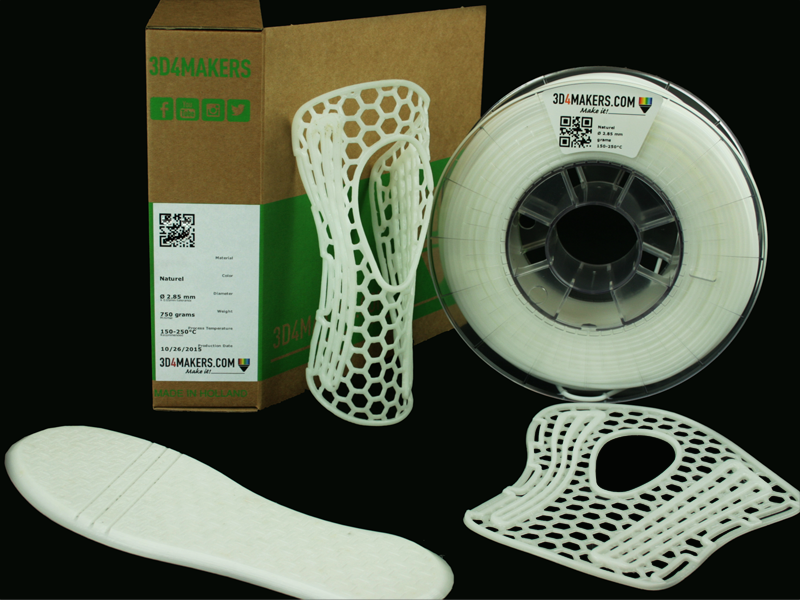
I’m looking at a plastic I haven’t seen before for 3D printing: PCL.
PCL, which stands for “Polycaprolactone”, is one of many polymers that have been attempted for use in 3D printing applications.
As you might expect, PCL has properties different than other commonly used 3D printing plastics, some of which make it quite unique and applicable for unusual applications.
The plastic offers good 3D printing qualities, such as layer adherence, which should reduce de-lamination from stress along layer boundaries. It also provides excellent impact strength and durability.
But the major feature of PCL is its melt temperature, which is only a mere 60C, far below commonly used 3D printer materials such as PLA and ABS, which have melt temperatures in the 200C+ range.
This means PCL can easily be 3D printed on most filament-based 3D printers with low hot-end temperatures.
However, this melt temperature offers some advantages and disadvantages.
If you’re expecting to use 3D printed PCL parts in any environment approaching 60C, watch out, as they will soften up and perhaps fail. You won’t want to print a GPS mount for your car dashboard with this stuff.
On the other hand, this property could be useful in other situations. You could, for example, dunk a PCL print in a pail of water that’s just under 60C to soften up the print. It can then be re-shaped slightly for fitting in ways it could not.
An example of this might be to 3D print a “rivet” that fits through a hole. By heating it slightly, you can reshape one end to lock it in place permanently. Another example might be to slightly resize a snap-on lid whose size was off slightly. Soften it up and it will fit!
Is it possible to buy PCL 3D printer filament? Yes, I am aware of one source, although there may be others. 3D4Makers in the Netherlands sells 750g spools of 99% pure PCL (white) for €80 (USD$90), or about USD$120 per kg.
That’s more than you’d pay for more common 3D printer filaments, but it is indeed a very special material for unusual applications.
Via 3D4Makers

